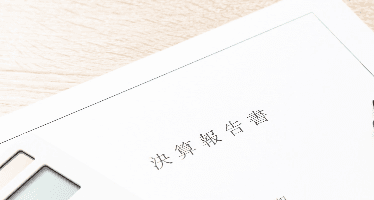Corporate Governance
Internal control system
Establishing an internal control system is vital to corporate continuity and enhancing corporate value. In alignment with the circumstances of our group, we are committed to building and operating appropriate structures that ensure efficiency, transparency, and fairness in our operations. The current status of our group's internal control system is as follows.
1. Structure to ensure the efficient execution of duties by directors and employees, and a framework to ensure proper operations across our corporate group, including our company and its subsidiaries
A. Efficient business structure
In executing the businesses of our group, authority is delegated to respective divisions (including group companies) based on predefined duties and authority and reasonable decision-making rules, in accordance with the basic internal control policy. Each division head formulates business plans aligned with management policies and strategies and executes them within the scope of their delegated authority.
For matters such as capital investment and personnel transfers arising during business execution, decisions are made by the Executive Committee, comprising full-time directors and heads of key divisions, based on the basic policies determined by the Board of Directors. These decisions are thoroughly and carefully considered from an enterprise-wide perspective, in line with the basic internal control policy and management policies and strategies approved by the Board of Directors.
To ensure clear objectives and efficient business operations, annual budgets are established for the entire enterprise and each business segment in accordance with budget management regulations. We rigorously manage performance against these budgets, conducting regular status reviews and implementing necessary adjustments through quarterly business hearings and monthly Executive Committee meetings.
B. Structure to ensure validity, transparency, and fairness while enabling proactive risk taking in decision making and efficient and proper business execution
We will clarify the matters to be submitted (those requiring resolutions and reporting) to the Board of Directors and other relevant bodies, as well as duties and authority, and the division of duties.
Decisions requiring particular attention to validity, transparency, and fairness, including executive directors' performance evaluations, remuneration, and nominations, will be subject to consultation and deliberation by the Nomination and Remuneration Advisory Committee.
We will conduct regular evaluations of the effectiveness of the Board of Directors.
We will conduct regular evaluations of the effectiveness of the Board of Directors.
2. Structure to ensure appropriate protection of assets
The acquisition, utilization, and disposal of assets in our group are conducted under the procedures and approvals as stipulated in the internal regulations of our company and its group companies. In addition, we limit the impact on assets from both actualized and anticipated losses through appropriate risk management.
3. Structure for information storage and management
Information related to the execution of duties by directors within our group, including electronic records, is stored and managed in accordance with internal regulations.
4. Structure for managing the risk of loss
Our group establishes dedicated divisions and specialized committees for specific risk categories, including business, disaster, quality and environmental, health and safety, and fraud-related risks. These divisions and committees work collaboratively with relevant operational divisions involved with risks to continuously identify, analyze, and evaluate risks, and to consider and validate appropriate countermeasures. In addition, under the supervision of the Risk Management Committee,significant risks with potential impact across the entire group are likewise addressed through this framework, with ongoing identification, analysis, risk evaluation, and the consideration and validation of appropriate countermeasures to conduct risk management in a group-wide and integrated manner.
5. Structure to ensure that the execution of duties by directors and employees complies with laws and regulations and the Articles of Incorporation
A. FUJIKURA COMPOSITES Code of Conduct
We have established the FUJIKURA COMPOSITES Code of Conduct as a cornerstone of our compliance with laws and social ethics in our group. All officers and employees are required to comply with this code, which serves as the foundation of our compliance system.
B. Compliance Promotion Committee
The Compliance Promotion Committee, chaired by our director, is established for developing a group-wide compliance system, identifying problems, analyzing and evaluating compliance risks, and formulating recurrence prevention measures based on the FUJIKURA COMPOSITES Code of Conduct.
C. Multi-layered whistleblowing channels
Our company permits whistleblowers to report concerns directly, bypassing standard organizational reporting lines, by selecting their preferred recipient. In addition to external law firms, reports may be submitted to the President; full-time Audit and Supervisory Committee members; the General Manager of the Administration Division; the chairperson of the Compliance Promotion Committee; the head of the Human Resources & General Affairs Department; human resources personnel at each business site; members of the Health Management Office; and labor union chairpersons.
Whistleblowing information that significantly impacts or may impact our company or group must be reported to the Board of Directors, not only by the chairperson of the Compliance Promotion Committee, but also by directors serving on the Audit and Supervisory Committee and those not serving on the committee.
D. Monitoring
The Internal Audit Office assesses the development and operational status of the compliance system to evaluate the effectiveness of our internal controls. If necessary, it requests corrections and subsequently verifies that effectiveness has been restored through the implementation of remedial measures.
6. Structure to ensure the reliability of financial reporting
We have established the Internal Control Office to promote the unified and comprehensive development and operation of internal controls across our group and are building a framework that aligns with the Practical Guidance for Internal Control over Financial Reporting, stipulated by the Business Accounting Council.
7. Structure for employees to assist the Audit and Supervisory Committee
The Audit and Supervisory Committee may request assistance from members of the Administration Division to support its operations. If necessary, for the execution of its duties, the committee may request assistants who can perform audit-related support work under its direct supervision, independent of directors other than those serving on the committee.
Upon receiving requests for assistants from the Audit and Supervisory Committee, our company will, in consultation with the committee, determine the selection of assistants—whether internal personnel or external experts—as well as the contract terms, and the compensation while assisting the committee.
8. Matters concerning the independence of employees from directors other than those serving on the Audit and Supervisory Committee, as referred to in the preceding paragraph
The appointment, dismissal, and any change to compensation of assistants referred to in the preceding paragraph will be decided after consultation with the Audit and Supervisory Committee.
9. Matters concerning ensuring the effectiveness of instructions to employees assisting the Audit and Supervisory Committee
The appointed assistants are under the direct supervision of the Audit and Supervisory Committee and perform their duties under their instructions.
10. Reporting structures to the Audit and Supervisory Committee: whether by directors and employees or by liaison personnel receiving reports from a subsidiary's director, auditor, or employee; and other reporting framework
The Audit and Supervisory Committee members attend meetings of the Board of Directors and other critical meetings and receive reports from directors and employees in key positions of our company and its group companies concerning material matters that may affect business operations. Directors and employees report on material management matters at the request of the Audit and Supervisory Committee members.
Our company's whistleblowing regulations also stipulate that the content of reports and investigation results be reported to the Audit and Supervisory Committee, allowing the committee to receive information directly, conduct its independent investigations, report its findings to the Board of Directors, and recommend corrective actions, in accordance with the regulations governing the Board of Directors.
11. Structure to ensure that whistleblowers referred to in the preceding paragraph are not treated unfavorably because of their reporting
This matter will be addressed in accordance with the provisions concerning whistleblower protection set forth in the whistleblowing regulations.
12. Procedures for the prepayment or reimbursement of expenses incurred in the execution of duties by Audit and Supervisory Committee members (limited to matters pertaining to the execution of duties of the Audit and Supervisory Committee); and other matters concerning the policy for handling expenses or liabilities incurred in connection with the execution of such duties
Our company will bear the full amount of expenses and liabilities based on the request of the Audit and Supervisory Committee members.
13. Other structures to ensure effective audits by the Audit and Supervisory Committee
The Audit and Supervisory Committee holds regular meetings with the Representative Director and the accounting auditors to exchange opinions. When necessary, it also conducts direct interviews with relevant division heads, including those overseeing respective group companies, to strengthen its audit activities. In addition, as necessary, the committee collaborates with the accounting auditors, the internal audit division, and external experts to collect information and enhance the audit findings.
14. Basic approach to the elimination of antisocial forces and its initiative status
To safeguard our corporate value and fulfil our social responsibilities, we have stipulated the elimination of relationships with antisocial forces in the FUJIKURA COMPOSITES Code of Conduct. With the Human Resources & General Affairs Department serving as the coordinating division, we collaborate with local police authorities to strengthen our damage prevention framework through employee training and the inclusion of clauses to exclude antisocial forces in our contract templates.
Other information
Executive remuneration
At the Board of Directors meeting held on May 12, 2025, our company approved revisions to the content of the policy for determining remuneration for individual directors (excluding those serving on the Audit and Supervisory Committee).
Additionally, pursuant to the resolution of the 146th Annual General Meeting of Shareholders held on June 26, 2025, our company has introduced a stock-based remuneration system for directors (excluding those serving on the Audit and Supervisory Committee and outside directors).
1. Policy for determining the details of monetary and non-monetary remuneration, including component types, amounts/number of shares, and calculation methods
Each director of our company (excluding outside directors) will receive monetary remuneration, comprising of fixed and performance-linked components determined according to their respective positions.
In addition to the above, we provide directors with stock-based remuneration through a share delivery trust scheme, with the aim of raising awareness of contributing to the improvement of medium- to long-term business performance and the increase of corporate value. Performance-linked remuneration is calculated based on the consolidated net income of the previous fiscal year as an indicator, for the purpose of raising directors' awareness of net income. The amount of remuneration is determined by multiplying the consolidated net income of the previous fiscal year by the fixed coefficient of 0.03, which is common to all directors, and then by a position-specific coefficient applicable to each eligible director.
In addition to the above, we provide directors with stock-based remuneration through a share delivery trust scheme, with the aim of raising awareness of contributing to the improvement of medium- to long-term business performance and the increase of corporate value. Performance-linked remuneration is calculated based on the consolidated net income of the previous fiscal year as an indicator, for the purpose of raising directors' awareness of net income. The amount of remuneration is determined by multiplying the consolidated net income of the previous fiscal year by the fixed coefficient of 0.03, which is common to all directors, and then by a position-specific coefficient applicable to each eligible director.
2. Policy for determining the proportion of remuneration components
The proportion of fixed, performance-linked, and stock-based remuneration varies depending on factors such as the director's position and performance. As a general guideline, if the net income is 3.8 billion yen, the fixed remuneration accounts for approximately 60–70%, while variable remuneration, i.e., performance-linked and stock-based components, comprises approximately 30–40%. Within the variable remuneration, 45% of the performance-linked remuneration will be provided as stock-based remuneration, as a general guideline.
Remuneration for outside directors will consist solely of fixed remuneration, in light of the importance placed on independence.
3. Policy for determining the timing and conditions for providing remuneration to directors
Monetary remuneration, comprising of both fixed and performance-linked components, will be paid monthly, with the annual amount evenly divided into twelve equal parts. Non-monetary remuneration (stock-based remuneration) will, in principle, be granted upon retirement to eligible directors, with the number of shares corresponding to the position-based points accrued throughout their service.
4. Matters concerning the delegation of authority for determining individual directors' remuneration
The Board of Directors will delegate the determination of individual remuneration amounts to the President & Executive Officer within the remuneration limit approved at the General Meeting of Shareholders. This delegation is subject to obtaining input from the Nomination and Remuneration Advisory Committee, a voluntary advisory body.
The Nomination and Remuneration Advisory Committee will consist of a majority of outside directors, and the chairman will be an outside director.
Following the delegation of authority, the President & Executive Officer will prepare a draft of individual remuneration and finalize the amounts after receiving advisory input from the Nomination and Remuneration Advisory Committee.
5. Number of directors
At the 144th Annual General Meeting of Shareholders held on June 29, 2023, it was resolved that the number of directors (excluding those serving on the Audit and Supervisory Committee) will not exceed eight, and the number of directors serving on the committee will not exceed five.












